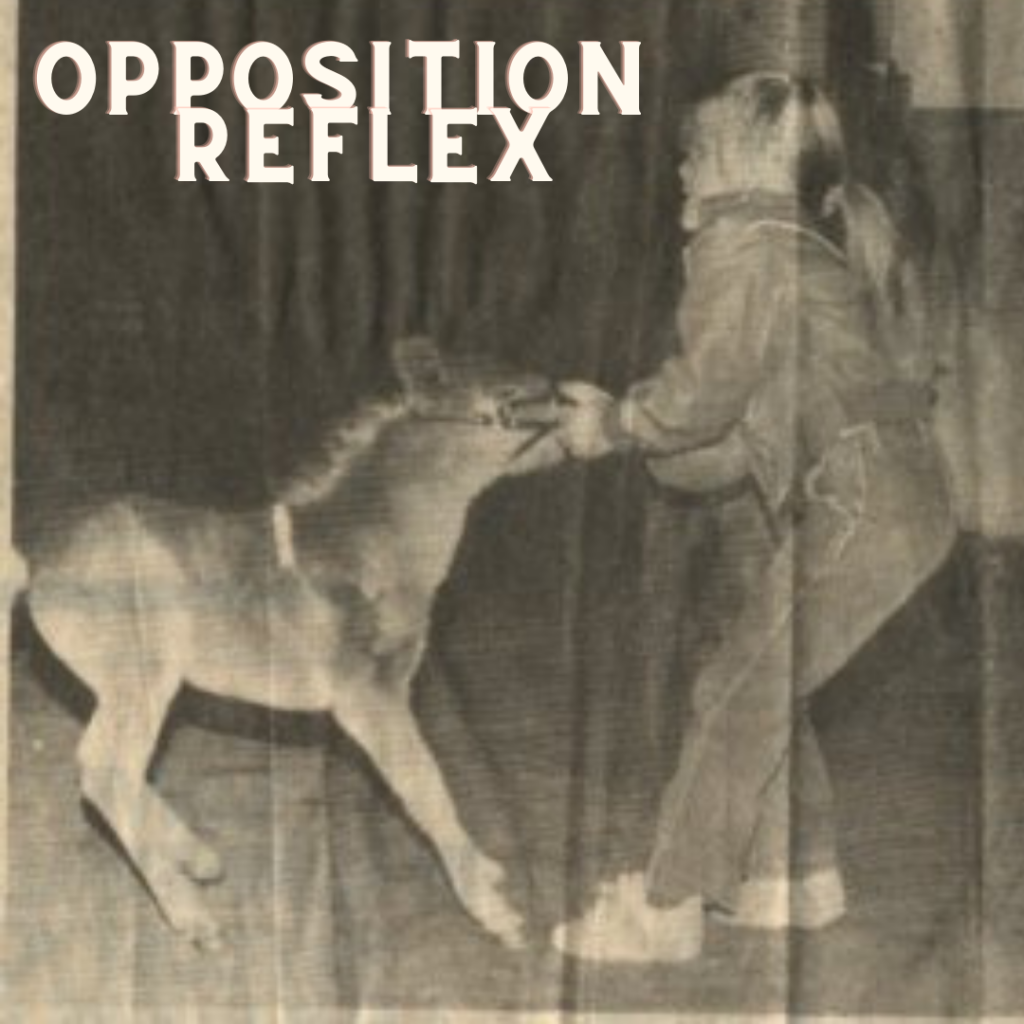
That’s me when I was 5 years old, and the baby is the late great Circle J Buster Bo. The photo was from a newspaper clipping I found about a Miniature Horse show back in 1985.
It’s definitely NOT an example of good horsemanship 😉 but it is a great example of the opposition reflex at work.
Anyone who has ever worked with a horse has encountered the opposition reflex, but not many of us know about it – I didn’t until just a few years ago, and understanding it means that I’ve since had much better luck avoiding it.
Horses naturally meet pressure with pressure. If you pull, they pull back. If you push, they’ll push. And it’s not just the being “stubborn” or trying to ruin your day – it’s a hardwired survival instinct.
To understand how the opposition reflex worked in their favour, think of a wild horse being attacked by a wolf. The wolf reaches up and grabs the soft part of the horse’s belly. If the horse pulled away from that bite, the teeth of the wolf would tear open his belly and likely result in the death of the horse. But if he pushes into the pressure, not only does he minimize the damage from the bite, but he has a great chance of pushing the wolf off balance, trampling him and getting away.
So horses have this hardwired survival instinct to meet pressure with more pressure, and humans decided that the “right” way to train them was with pressure. ;P
You can skip the pressure altogether, and use food rewards and targets and shaping. but if you’re going to use pressure at all then being aware of the opposition reflex, minimizing your pressure and never escalating it, will help keep your horse comfortable and keep you safe. There are some horses who have a very heightened opposition reflex, and who become not just difficult, but dangerous.
The next time your horse braces against the leadrope or leans on you when you want them to move away, don’t call them stubborn and escalate to punishment. Remember they’re just following their instinct, and try a different approach that doesn’t conflict with the opposition reflex.
Learn more about the opposition reflex and how to avoid it in my Understanding Your Miniature Horse ebook!
Would this be the same with miniature mules. I rescued a couple little mules about three years ago. We are sure that kids abused them because they would not come near people especially kids. If they saw a kid they would take off. They are getting better but they still won’t just walk up and let you pet them. Once you get the halter on them they will go anyplace with you let you pet them whatever but if they are free they won’t come near you. They now follow me into the barn when I go to feed them but if I turn around to pet them they take off. Is there anything that I could do that would make them friendly
Yes, in fact I’ve found that mules are even more into pressure than horses – with my mule I’ve had much better success with using no pressure at all, and instead shaping using positive reinforcement. Giving him the choice to participate made a huge difference in our relationship. Here’s an article with more on what I did with him, and there’s a video at the bottom too: https://classroom.miniaturehorsemanship.com/halter-training-a-challenging-horse/